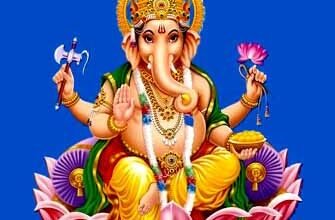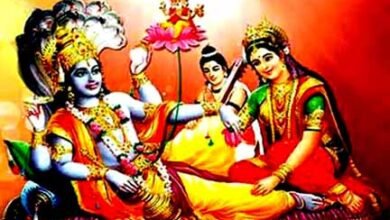
प्रकटोत्सव…
ममाखिलपापप्रशमनपूर्वक सर्वाभीष्ट सिद्धये
श्रीकृष्ण जन्माष्टमी व्रतमहं करिष्ये॥
 हिन्दू पंचांग के अनुसार साल के छठे महीने को भाद्रपद अथवा भादों का महीना कहते है, जो श्रावण महीने के बाद और आश्विन माह से पहले आता है. अनादी काल से भगवान कृष्ण जनमानस के लिए जीवन दर्शन प्रस्तुत कर रहे हैं. जन्माष्टमी भारत में ही नहीं पुरे विश्व में मनाई जाती है. भगवान कृष्ण का जन्म भादों महीने के अष्टमी की अर्द्ध रात्री में हुआ था. भादों महीने में श्री कृष्ण के जन्म को जन्माष्टमी के त्यौहार के रूप में प्राय: सभी लोग मनाते हैं. चूँकि भादों में भगवान श्रीकृष्ण के प्रकटोत्सव का भी महीना होता है, इसी दिन भगवान विष्णु के 8वें अवतार के रूप में श्रीकृष्ण ने भादों के महीने के कृष्ण पक्ष में रोहिणी नक्षत्र के अंतर्गत हर्षण योग वृष लग्न में जन्म लिया था.
हिन्दू पंचांग के अनुसार साल के छठे महीने को भाद्रपद अथवा भादों का महीना कहते है, जो श्रावण महीने के बाद और आश्विन माह से पहले आता है. अनादी काल से भगवान कृष्ण जनमानस के लिए जीवन दर्शन प्रस्तुत कर रहे हैं. जन्माष्टमी भारत में ही नहीं पुरे विश्व में मनाई जाती है. भगवान कृष्ण का जन्म भादों महीने के अष्टमी की अर्द्ध रात्री में हुआ था. भादों महीने में श्री कृष्ण के जन्म को जन्माष्टमी के त्यौहार के रूप में प्राय: सभी लोग मनाते हैं. चूँकि भादों में भगवान श्रीकृष्ण के प्रकटोत्सव का भी महीना होता है, इसी दिन भगवान विष्णु के 8वें अवतार के रूप में श्रीकृष्ण ने भादों के महीने के कृष्ण पक्ष में रोहिणी नक्षत्र के अंतर्गत हर्षण योग वृष लग्न में जन्म लिया था.
भागवतपुराण, ब्रह्मपुराण, विष्णु पुराण और भविष्य पुराण में श्री कृष्ण जन्माष्टमी के बारे में बताया गया है कि, भाद्र महीने में जो अष्टमी हो और रोहणी (नक्षत्र) युक्त हो, उसी अष्टमी को भगवान श्रीकृष्ण चन्द्र का जन्म हुआ था, और इस तिथि को ही उपवास करना चाहिए. “कृष्ण” वास्तविक में संस्कृत का एक शब्द है जिसका अर्थ होता है ‘काला’, ‘अंधेरा’ या ‘गहरा नीला’. भगवान श्री कृष्ण के कई नाम है जैसे:- कैन्हाया, श्याम, केशव, द्वारकाधीश, वासुदेव, गोविन्द, मुरारी, गोपाल…
“आनंद उमंग भयो जय हो नन्द लाल की, नन्द के आनंद भयो जय कन्हिया लाल की.
बृज में आनंद भयो जय यशोदा लाल की, हाथी घोड़ा पालकी जय कन्हिया लाल की ”.
भगवान कृष्ण का जन्म मथुरा के कारावास में वसुदेव और देवकी की आठवीं सन्तान के रूप में हुआ, लेकिन उनका लालन-पालन गोकुल में हुआ था. गोकुल में यशोदा औए नन्द उनके पालक माता-पिता थे. बालक कृष्ण बड़े ही नटखट थे और खेल ही खेल में उन्होंने ऐसे-ऐसे काम किये, जो आम मनुष्य के लिए संभव ही नहीं था. नन्द बाबा के घर आचार्य गर्गाचार्यजी के द्वारा उनका नामकरण संस्कार हुआ था. नाम रखते समय आचार्य गर्गाचार्यजी ने बताया था कि तेरा यह पुत्र प्रत्येक युग में अवतार लेता है. इससे पहले यह तीन अवतार ले चूका है और चौथे अवतार में कृष्ण वर्ण होने के कारण ही इसका नाम कृष्ण है.
कृष्ण भारतीय संस्कृति में कई विधाओं का प्रतिनिधित्व करते है और उनका चित्रण आमतौर पर काले या नीले रंग की त्वचा के साथ किया जाता है. बताते चलें कि, भारत और दक्षिनपूर्व एशिया की पत्थर की मूर्तियों में प्राकृतिक रंगों में चित्रित किया गया है. कृष्ण को अक्सर मुकुट में मोर पंख और गले में पुष्पों की माला साथ ही बांसुरी बजाते हुए या त्रिभंग मुद्रा में चित्रित किया गया है. कभी-कभी गाय-बछड़े के साथ होते हैं जो गोविन्द का प्रतीक माना गया है. महाभारत में पांडव राजकुमार अर्जुन को गीता का उपदेश देते हैं तो दूसरी तरफ एक सारथी या यूँ कहें कि पथप्रदर्शक या दूरदृष्टा के रूप में चित्रन किया गया है.
बाल्यकाल की अवस्था में कृष्ण को एक बालक के रूप में चित्रं किया गया है जिसने बालक कृष्ण कभी हाथों व घुटनों पर रेंगते हुए, कभी नृत्य करते हुए, मक्खन खाते या चुराते हुए, लड्डू को अपने हाथ में लेकर चलते हुए और प्रलय के समय बरगद के पत्ते पर तैरते हुए चित्रण किया गया है. कृष्ण की प्रतिमा में क्षेत्रीय विविधताएं उनके विभिन्न रूपों में दिखाई पडती है जैसे गुजरात में द्वारकाधीश, ओडिशा में जगन्नाथ, महाराष्ट्र में बिठोवा, केरल में गुरुवारुप्प्न और राजस्थान में श्रीनाथजी. एक तरफ कृष्ण और राधा का दिव्य प्रेम तो दूसरी तरफ कुरुक्षेत्र के युद्ध में विश्वरूप, तो कहीं मित्रता के प्रतीक के रूप में चित्रण किया गया है. विष्णु धर्मोत्तर, बृहत् संहिता और अग्नि पुराण में कृष्ण के मूर्तियों या यूँ कहें कि वास्तुकला के दिशानिर्देश का वर्णन मिलता है.
वास्तव में श्रीकृष्ण एक निष्काम कर्मयोगी, दार्शनिक, युगपुरुष और दैवी सम्पदाओं से भरपूर पुराण पुरुष थे. उनका जन्म द्वापर युग के शुरुआत में हुआ था. महर्षि वेदव्यास ने श्रीमद्भागवत और महाभारत में कृष्ण का चरित्र विस्तार रूप से लिखा था. महाभारत युद्ध के समय भगवान श्री कृष्ण ने अर्जुन को जो उपदेश दिया था ‘वो’ आज पुरे विश्व में लोकप्रिय है.
कृष्ण की जीवन कथा के कई संस्करण हैं उनमे सबसे अधिक वर्णन भागवत पुराण, विष्णु पुराण और हरिवंश पुराण में मिलता है. सभी की कहानियों में कोई अंतर नहीं है लेकिन उनकी विशेषताओं, विवरण और शैली में काफी भिन्नता है. हरिवंश पुराण में काव्यात्मक और अलौकिक कल्पना से ओतप्रोत है जबकि, भगवत पुराण ब्रह्मांडीय लीला केरूप में प्रस्तुत किया गया है वहीं विष्णु पुराण में रहस्यमय पूर्ण शब्दों में वर्णन किया गया है. हिन्दू ग्रंथों में दार्शनिक विचारों की विस्तृत श्रृंखला कृष्ण के माध्यम से प्रस्तुत की गई है. माधवाचार्य जो कि एक हिदू दार्शनिक थे जिन्होंने वैष्णवाद के हरिदास सम्प्रदाय की स्थापना की और कृष्ण के उपदेशों को द्वैतवाद के रूप में प्रस्तुत किया. वैष्णव विद्यालय के संत जीव गोस्वामी कृष्ण धर्मशास्त्र को भक्ति योग के रूप में वर्णित किया. व्ल्भाचारीजी जो वैष्णवाद के संस्थापक थे उन्होंने कृष्ण ज्ञान को अद्वैत रूप में प्रस्तुत किया. जबकि आदि शंकराचार्य जो हिन्दू धर्म में विचारों के एकीकरण और मुख्य धाराओं की स्थापना के लिए जाने जाते हैं उन्होंने पंचायतन पूजा पर कृष्ण का वर्णन किया.
वालव्याससुमनजीमहाराज,
महात्मा भवन,
श्रीरामजानकी मंदिर,
राम कोट, अयोध्या.
Mob: – 8709142129.
========= ========= =========
Prakatotsav…

Mamaakhilapaapaprashaman Nirbhay Sarvaabheesht Siddhaye
Shreekrshnajanmaashtamee Vratamahan Karishye।
 According to the Hindu calendar, the sixth month of the year is called Bhadrapada or the month of Bhadon, which comes after the month of Shravan and before the month of Ashwin. Since time immemorial, Lord Krishna has been presenting the philosophy of life to the public. Janmashtami is celebrated not only in India but all over the world. Lord Krishna was born at the midnight of Ashtami of the month of Bhadon. Almost everyone celebrates the birth of Shri Krishna in the month of Bhadon as the festival of Janmashtami. Since Bhadon is also the month of appearance of Lord Krishna, on this day, as the 8th incarnation of Lord Vishnu, Shri Krishna was born in the Krishna Paksha of the month of Bhadon under Rohini Nakshatra in Harshana Yoga Taurus ascendant.
According to the Hindu calendar, the sixth month of the year is called Bhadrapada or the month of Bhadon, which comes after the month of Shravan and before the month of Ashwin. Since time immemorial, Lord Krishna has been presenting the philosophy of life to the public. Janmashtami is celebrated not only in India but all over the world. Lord Krishna was born at the midnight of Ashtami of the month of Bhadon. Almost everyone celebrates the birth of Shri Krishna in the month of Bhadon as the festival of Janmashtami. Since Bhadon is also the month of appearance of Lord Krishna, on this day, as the 8th incarnation of Lord Vishnu, Shri Krishna was born in the Krishna Paksha of the month of Bhadon under Rohini Nakshatra in Harshana Yoga Taurus ascendant.
It has been told about Shri Krishna Janmashtami in Bhagwat Puran, Brahma Puran, Vishnu Puran, and Bhavishya Puran that Lord Shri Krishna Chandra was born on the same Ashtami which is in the month of Bhadra and has Rohani (constellation). Only fasting should be done. “Krishna” is actually a Sanskrit word that means ‘black’, ‘dark’ or ‘deep blue’. Lord Shri Krishna has many names like:- Kanhaya, Shyam, Keshav, Dwarkadhish, Vasudev, Govind, Murari, Gopal…
“Anand Umang Bhayo, Jai Nand Lal, Nand Ke Anand Bhayo, Jai Kanhiya Lal.
There is joy in Brij, Jai Yashoda Lal, elephant and horse palanquin, Jai Kanhiya Lal.
Lord Krishna was born in the prison of Mathura as the eighth child of Vasudev and Devaki, but he was brought up in Gokul. Yashoda and Nand were his foster parents in Gokul. Child Krishna was very mischievous and while playing, he did such things which were not possible for a common man. His naming ceremony was performed by Acharya Gargacharyaji at Nand Baba’s house. While naming the person, Acharya Gargacharyaji said that her son incarnates in every era. Before this, it had taken three incarnations, and its name was Krishna because of the presence of Krishna character in the fourth incarnation.
Krishna represents many genres in Indian culture and is usually depicted with black or blue skin. Let us tell you that the stone sculptures of India and Southeast Asia are painted in natural colors. Krishna is often depicted with peacock feathers in his crown and a garland of flowers around his neck, as well as playing the flute or in the Tribhanga posture. Sometimes he is accompanied by a cow and calf, which is considered a symbol of Govind. In the Mahabharata, the Pandava prince preaches the Gita to Arjuna, while on the other hand, he is depicted as a charioteer or rather a guide or a visionary.
In childhood, Krishna has been depicted as a child, sometimes crawling on his hands and knees, sometimes dancing, eating or stealing butter, walking with laddus in his hand, and at the time of destruction, eating a banyan tree. Has been depicted floating on a leaf. Regional variations in the iconography of Krishna are visible in his various forms such as Dwarkadhish in Gujarat, Jagannath in Odisha, Bithova in Maharashtra, Thursdaysuppan in Kerala, and Shrinathji in Rajasthan. On one hand, the divine love of Krishna and Radha has been depicted, on the other hand, the form of the world in the battle of Kurukshetra, and on the other hand, it has been depicted as a symbol of friendship. Description of Krishna’s sculptures or rather architectural guidelines are found in Vishnu Dharmottara, Brihat Samhita, and Agni Purana.
In reality, Shri Krishna was a selfless Karmayogi, a philosopher, a man of the times, and a Puran Purusha full of divine wealth. He was born at the beginning of Dwapar Yuga. Maharishi Vedvyas had written the character of Krishna in detail in Shrimad Bhagwat and Mahabharata. The advice given by Lord Shri Krishna to Arjun during the Mahabharata war is popular all over the world today.
There are many versions of Krishna’s life story, most of which are described in Bhagwat Purana, Vishnu Purana, and Harivansh Purana. There is no difference in all the stories but there is a lot of variation in their characteristics, details, and style. Harivansh Purana is filled with poetic and supernatural imagination, while Bhagavad Purana has been presented in the form of cosmic play, whereas Vishnu Purana has described it in mystical terms. A wide range of philosophical ideas are presented through Krishna in Hindu texts. Madhvacharya was a Hindu philosopher who founded the Haridas sect of Vaishnavism and presented the teachings of Krishna in the form of dualism. Saint Jiva Goswami of the Vaishnava school described Krishna theology as Bhakti Yoga. Valbhachariji, who was the founder of Vaishnavism, presented the knowledge of Krishna in a non-dual form. Whereas Adi Shankaracharya who is known for the integration of ideas and establishment of main streams in Hinduism described Krishna on Panchayatan Puja.
Walvyassumanji Maharaj,
Mahatma Bhawan,
Shriram Janaki Temple,
Ram Kot, Ayodhya.
Mob: – 8709142129.





